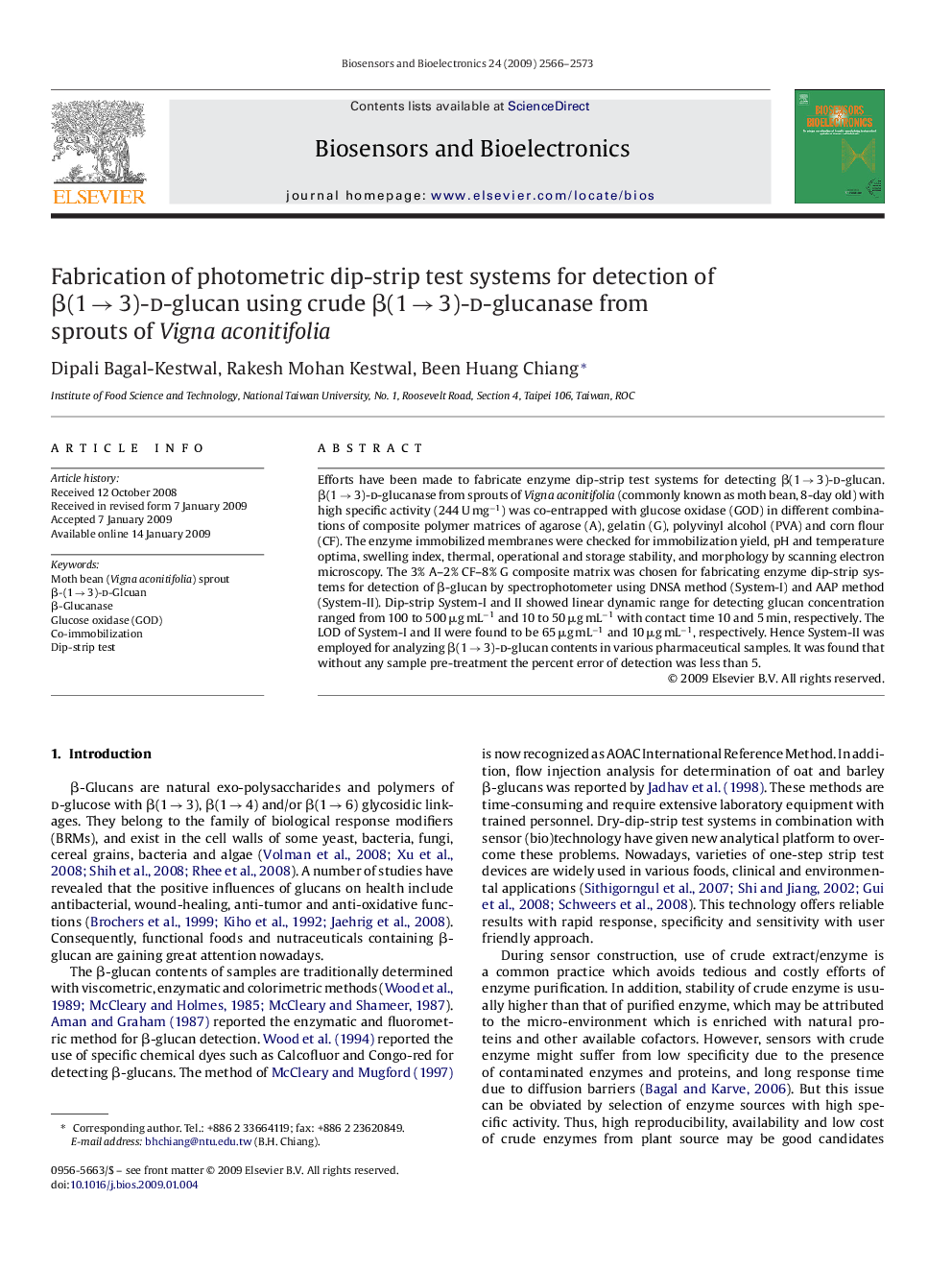| Article ID | Journal | Published Year | Pages | File Type |
|---|---|---|---|---|
| 868712 | Biosensors and Bioelectronics | 2009 | 8 Pages |
Efforts have been made to fabricate enzyme dip-strip test systems for detecting β(1 → 3)-d-glucan. β(1 → 3)-d-glucanase from sprouts of Vigna aconitifolia (commonly known as moth bean, 8-day old) with high specific activity (244 U mg−1) was co-entrapped with glucose oxidase (GOD) in different combinations of composite polymer matrices of agarose (A), gelatin (G), polyvinyl alcohol (PVA) and corn flour (CF). The enzyme immobilized membranes were checked for immobilization yield, pH and temperature optima, swelling index, thermal, operational and storage stability, and morphology by scanning electron microscopy. The 3% A–2% CF–8% G composite matrix was chosen for fabricating enzyme dip-strip systems for detection of β-glucan by spectrophotometer using DNSA method (System-I) and AAP method (System-II). Dip-strip System-I and II showed linear dynamic range for detecting glucan concentration ranged from 100 to 500 μg mL−1 and 10 to 50 μg mL−1 with contact time 10 and 5 min, respectively. The LOD of System-I and II were found to be 65 μg mL−1 and 10 μg mL−1, respectively. Hence System-II was employed for analyzing β(1 → 3)-d-glucan contents in various pharmaceutical samples. It was found that without any sample pre-treatment the percent error of detection was less than 5.
